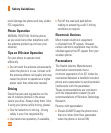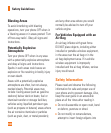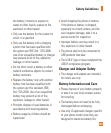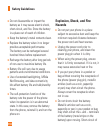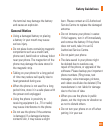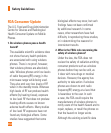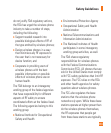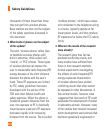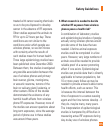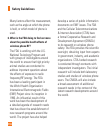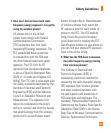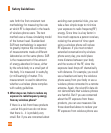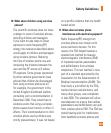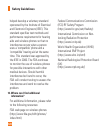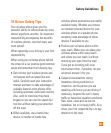
Safety Guidelines
114
thousands of times lower than those
they can get from wireless phones.
Base stations are thus not the subject
of the safety questions discussed in
this document.
3. What kinds of phones are the subject
of this update?
The term ‘wireless phone’ refers here
to handheld wireless phones with
built-in antennas, often called ‘cell’,
‘mobile’, or ‘PCS’ phones. These types
of wireless phones can expose the
user to measurable radio frequency(RF)
energy because of the short distance
between the phone and the user’s
head. These RF exposures are limited
by FCC safety guidelines that were
developed with the advice of the
FDA and other federal health and
safety agencies. When the phone is
located at greater distances from the
user, the exposure to RF is drastically
lower because a person’s RF exposure
decreases rapidly with increasing
distance from the source. The so-called
‘cordless phones,’ which have a base
unit connected to the telephone wiring
in a house, typically operate at far
lower power levels, and thus produce
RF exposures far below the FCC safety
limits.
4. What are the results of the research
done already?
The research done thus far has
produced conflicting results, and
many studies have suffered from
flaws in their research methods.
Animal experiments investigating
the effects of radio frequency(RF)
energy exposures characteristic
of wireless phones have yielded
conflicting results that often cannot
be repeated in other laboratories. A
few animal studies, however, have
suggested that low levels of RF could
accelerate the development of cancer
in laboratory animals. However, many
of the studies that showed increased
tumor development used animals that
had been genetically engineered or



